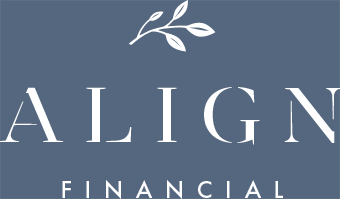I’ve been fascinated with finance for as long as I can remember. It’s not that I loved money as a child. It’s not that I was greedy, or obsessed with savings. I just had a clear understanding very early on of the importance of a healthy attitude towards money. I saw how fundamental that healthy attitude is to our own wellbeing as individuals, and the country’s wellbeing, too.
For most of us, much of our relationship with money starts at home. We collect money habits from our family just like the food we get used to, or the hobbies the family pursues. Or whether you’re a mayo or a Miracle Whip family. You grow up with family norms about finances that can be helpful, or they can set you back. Some may motivate you to learn more, and that was certainly the case for me.
I knew I wanted to have a different relationship with money. Most of my early financial education was self taught, and I pursued a degree in Finance and then graduate level coursework in financial planning while taking the Certified Financial Planner examination. So I really chased financial know-how, until I could share it with others.
Unfortunately, most schools don’t have much available for financial literacy courses. And I know our schools are already doing a lot with a little, but I think basic financial literacy programs in the schools could be a huge help. Financial skills are just as important as many of the other skills our kids learn and need.
So I had the opportunity to learn that money was a tool, and something we had power over rather than the other way around. I often think of how different the world around us might look if all of us, from an early age, were equipped with basic financial knowledge for our future. That’s why I teach financial literacy courses to adults. So until there’s more support for financial literacy in mainstream education, you need to take matters into your own hands. You need to teach your kids about money.
Five Invaluable Lessons to Teach Kids About Money
Raising children of my own made me acutely aware of how my habits and relationship with money would influence them more than just about anything else. And how the job of teaching them about money fell to me. I thought about what I teach adults, and the ethos that runs through my business. I wondered how best to pass on some wisdom to the next generation, and how to help them with that healthy money mindset.
I decided there are five basic concepts that if I could pass on in a truly formative way, I would feel like I had done the very best I could. I could tell them to open a bank account, and learn to budget. But that’s just like telling kids to brush their teeth without telling them why it’s important. Once they understand why they need to brush their teeth, they’ll be more likely to do it regularly, and then it becomes an instinctive part of their daily routine.
It’s exactly the same with money.
A bit of basic understanding gives meaning to doing things in a certain way. Then that creates lifelong habits. You know how you feel a bit… I don’t know… yuck… when you leave the house without brushing your teeth? You end up getting the same feeling when you make a bad money move. So you avoid doing it, or put things right as soon as you possibly can. You can teach your kids about money by passing on these five invaluable lessons, and watching them become part of their money mindset.
Lesson #1: Compound Interest Is Your BFF (Best Financial Friend)
So this is a big one, I suppose. It’s hard to help young children conceptualize compound interest, and that’s OK. You can leave all the details until they’re teenagers. But you can start to sow the seeds of understanding when they’re really young. As soon as you’re able, open a bank account for them. Put a small amount in it. Then periodically look at the balance with them, and show them how their money is growing, even if just by a cent or two. That’s all you need to do to instil this idea of leaving some money untouched.
Not all money has to be spent. Leave some money to grow.
When your kids get older, explain the basics. Explain that money left in the bank usually grows, because banks reward you for leaving money untouched so they can use it in the meantime. It might seem like little increments to begin with, especially when you’re talking about small amounts of money and smaller amounts of interest. This might not look very impressive to a teenager.
So show them examples of what happens over a long period of time. This is what will really supercharge their savings. Not all of their money needs to be saved, but compound interest will work its magic over whatever pennies they stash away now.
But don’t forget to point out that it doesn’t always work in your favor so you need to be able to teach your kids to spot when it could be working against them. Explain that the bad boys of banking will use compound interest to their own advantage, so debts can soon spiral out of control. For older teenagers, show them the difference between a simple interest loan and a compound interest loan.
If you get stuck explaining some of the math, there are some pretty good resources out there. Try this video for teenagers, and you can teach them how to do the calculations themselves.
Lesson #2: Live Within Your Means, But Use Credit Wisely
In the modern world that they are growing up in, kids are bombarded with advertisements. Sometimes those advertisements don’t even look like advertisements. They are being tempted to part with their money (or yours) at every turn. Plenty of posts on social media are subtle but extremely persuasive ads, telling your kids that they need this new *insert tech item/clothes/accessory here* and they need it right now.
And those ads work. Companies wouldn’t spend millions of dollars on those advertisements if they didn’t make that back, plus some. So kids are growing up with this idea that they need this, and they need that. And can they afford all those things? Most likely not. But they will be left with a really nagging sense of missing out if they don’t have it, and this starts sowing the seeds of the idea that they can borrow to get what they want.
That is a seed that you don’t really want to grow. Well, not too big. This one needs to be pruned.
Make sure your kids know that it is far healthier to wait until they can afford something or work that much harder to get it. Do some extra chores, run some errands. But also, every now and then, do this. Lend them some money to help them get what they want. Set up a repayment schedule that’s within their means. If that repayment schedule involves them having to do some extra chores too, then all the better.
When they pay the loan back on time, tell them they did well and that you might lend to them again in the future.
If you don’t actually want to put them through that test as a real life example, then use it to teach your kids about money and credit. Establishing a positive relationship with their credit score as soon as they are able is only going to be a good thing for their financial life. Explain to them that being a good borrower opens doors for them, but unmanageable debt will keep them firmly closed.
Lesson #3: Everyone’s Enough Is Different
Kids need to be taught to be grateful for what they have. Sounds difficult, right? I mean, it’s hard enough for us, and most of us have to work on our gratitude. But if you are grateful for what you have, then you automatically have ‘enough’. But again, in this world of fierce advertising and constantly being sold to, it’s hard to hold on to that.
Help your kids to feel gratitude for what they have, and to set realistic goals for their future. Then help them work towards them. Help them from early on to understand what ‘enough’ means to them. Then you can protect them from unrealistic expectations and the pressure (and sometimes, unfortunately, crushing disappointment) that comes along with them.
Of course, the best way to foster this kind of attitude is to lead by example. Show that you are happy with what you have (even if that’s not always the case…). Show them that an extravagant lifestyle doesn’t equate to a happy one, and is not the best way of using their money.
Lesson #4: Make Money Mean More
Teach your young kids that there are ways to imbue meaning into their money that will make their whole experience of life better. That’s one of the fundamental principles behind Align Financial. We believe that if you can align your money with your values then you simply lead a happier, more content and more fulfilling life.
For example, you could start by teaching your children to use what they have positively by encouraging them to interact with charities. Maybe that’s by getting some clothes or used books from charity shops, and thinking about who their pocket money is helping. Or sponsor an endangered animal that they care about. Even make a tiny donation to a local sports team. Any act of kindness with their money can help them recognize the positive impact it can have.
And if you, yourself, are making conscious decisions about your spending, then you’re halfway there. You need to teach your kids to question their financial impulses and make them reflect on every expenditure. Is it in line with their goals? Does it bring them joy, or clutter? Will it ultimately help them achieve something, or is it just something they want, rather than need?
Kids, teenagers, young adults – they might all make mistakes about this from time to time. Maybe even regularly. But by bringing their awareness to it – when you throw out an unused toy, for example – you will teach your kids about money even without them realizing it.
Lesson #5: Master Money Through Agency, Awareness and Active Decision-Making
There’s a book I recommend reading called “The Opposite of Spoiled” by New York Times columnist Ron Lieber. He advocates for having your kids receive a regular allowance, but that it doesn’t necessarily have to be attached to “work” or chores. He suggests that it’s good for kids to have their own bank accounts and money to make decisions about (age appropriate, of course). So, following this idea, I decided to give my kids $10 per week, and two years down the line it’s increased to $15. This is money that they get to make their own choices about.
In theory, it’s easier to allow people to make their own mistakes about money when they are 12 than when they are 22. Early on, the mistakes might involve spending $100 on a toy they only use for a week. When they’re older and buying their first car or renting their first apartment, those mistakes are going to be much more expensive. If they learn early on what it feels like to buy something they didn’t actually use, or gave money to a friend that they shouldn’t have, then they get to experience the consequences (and rewards) of their decision making.
Recently, I even gave my kids a debit card that accesses their bank account. This allows them to keep track of their spending with their bank app on their phone as well as operate in a more modern, up-to-date way. My son even lost his debit card for a short time. I explained to him that it meant someone could use it and steal his money, and that it was his responsibility to find it, or we had to call and cancel the card. Well, he found it – and he’s never lost it since.
The author also had great advice about how to help your kids understand the value of a dollar. And if your kids have their own money, this can be a great way to teach them agency. I’ve explained to them that I’ll buy an average brand tennis shoe, and the typical cost is about $65.00. If they want the $110.00 brand of shoe that “all their friends have,” then they can pay the difference.
You might think I’m crazy for just handing over money to my kids, but I think it’s been a great teacher. I give them a budget for school clothes, supplies and activities – if there are things they want that are extra, they can decide if it’s worth it to them. And every month in order to get their transfer they have to submit a money report, in which they balance their checkbook and keep a record of what they spent their money on, and how much they brought in. This is designed to bring awareness about where their money goes, and not judgement. This way, they can continue to build agency around their financial choices.
For True Financial Wellbeing – TALK!
The overarching rule that all of these lessons involve is the most simple of them all. Open up – a sure fire way to teach your kids about money is to talk to them about it. Yes, you can show them and lead by example. But kids need to hear adults talking about how they decide things about money, without judgement, just the facts.
The more they do, the more confident they will feel in creating their own money habits in the future. And they need to know that it doesn’t matter how much or how little you have, money is just a tool. If you start with feelings of gratitude and empowerment or agency, anything is possible. Money is a wonderful servant, but a terrible master. So the trick is to master the tool, and you can’t do that without dedicating time and energy and consciousness.
It’s really not hard to teach your kids about money, but it takes time. It happens gradually, by letting those seeds germinate and grow, by letting those ideas become habits. Combine the ideas of compound interest, wise (and only wise!) use of credit, being grateful, reflecting on expenditures and giving them real, hands-on experience early on. By providing a solid foundation with those elements, you can create an extremely healthy money mindset in your children.
But many of us adults weren’t taught these things as we grew up. If you need some pointers, you might like to check out these resources. And if you need any assistance with your own wealth management and financial planning, please do reach out. I’d love to see if I can help.













